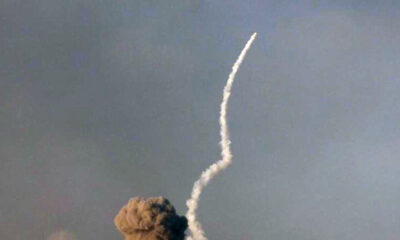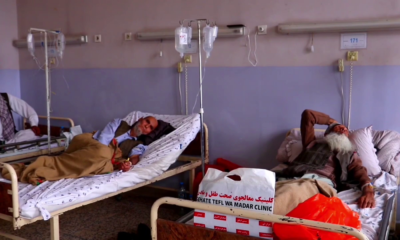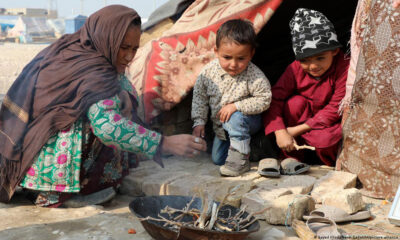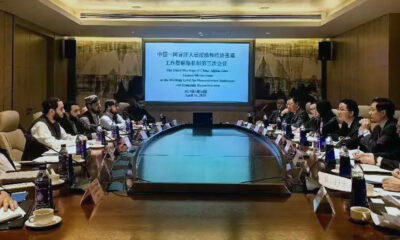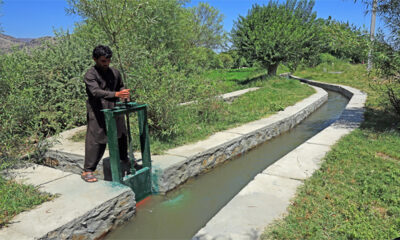Latest News
Hundreds of billions of US dollars “wasted” in Afghanistan
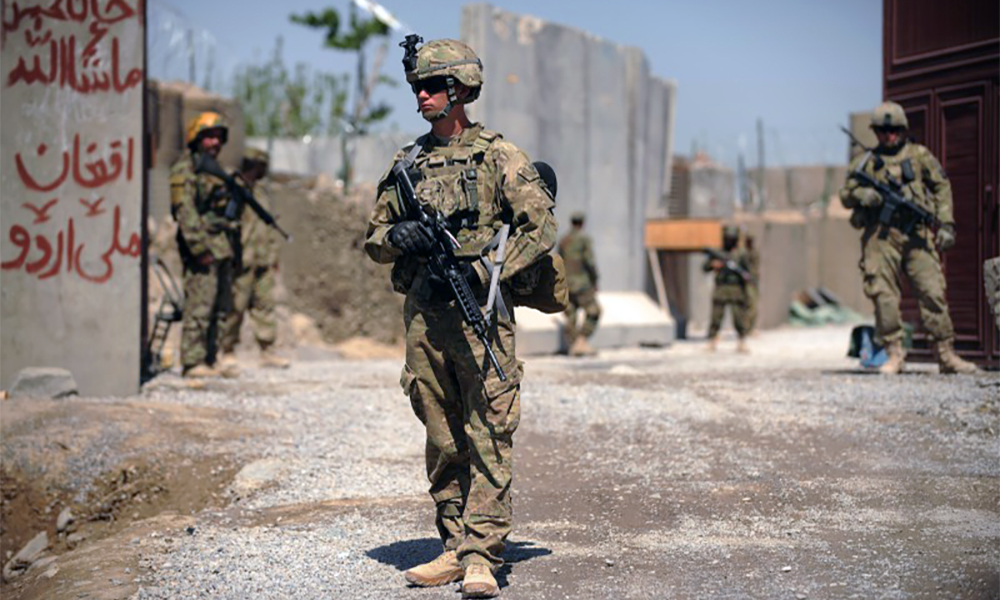
A catalog of “waste, fraud and abuse” reports made against the United States’ reconstruction efforts in Afghanistan have been “temporarily” removed from the Special Inspector General for Afghanistan Reconstruction’s (SIGAR) website.
In an expose by CNN, a US State Department spokesperson told CNN they had asked SIGAR to “temporarily” remove the reports, owing “to safety and security concerns regarding our ongoing evacuation efforts.” The spokesperson added SIGAR had the authority to restore them “when it deems appropriate.”
These reports, published for years on a quarterly basis, gave insight into the abuse and wastage of funds provided by the US government over 20 years.
The in-depth audits detailing these findings have, for the most part, been taken offline, despite having been widely promoted on social media platforms almost weekly for the past few years.
The total cost of the war, according to the Pentagon, was $825 billion, a low-end estimate: even President Joe Biden has cited an estimate that put the amount at over double that — more than $2 trillion, a figure that factors in long-term costs such as veterans’ care. The interest on the debt runs into hundreds of billions already, CNN reported.
However, the $145 billion reconstruction effort lacked oversight, leading Congress to set up SIGAR in 2008.
In their expose, CNN detailed 10 notable cases, stripped of identifying details on SIGAR’s website. The reports had however been collated by CNN over the years.
The cases are as follows:
1) The Tarakhil power plant project that was commissioned in 2007 as a backup generator for the capital, in case electricity supply from Uzbekistan was compromised.
A vast, modern structure, it ran on diesel-fueled turbines, supplied by a brand-name engineering giant. There was one catch: Afghanistan had scant diesel supply of its own and had to ship the fuel in by truck — making the plant too expensive to run, CNN reported.
The facility itself cost $335 million to build, and had an estimated annual fuel cost of $245 million. The most recent SIGAR assessment said at best it was used at just 2.2% capacity, as the Afghan government could not afford the fuel. USAID declined to comment.
2) A half-billion-dollar fleet of cargo planes that flew for a year ended up being sold as scrap.
In 2008, Afghanistan’s fledgling air force needed cargo planes and the Pentagon chose the G222 — an Italian-designed aircraft designed to take off and land on rough runways.
That first year, according to a speech made by SIGAR’s chief John Sopko, citing a USAF officer, the planes were very busy.
But they would not be sustainable. The aircraft were only noticed by SIGAR when Sopko noticed them parked at Kabul airport and asked what they were doing there.
Six years after the procurement was launched, the 16 aircraft delivered to Afghanistan were sold for scrap for $40,257. The cost of the project totaled $549 million.
3) A $36 million Marines HQ in the desert was neither wanted nor used, Sopko said in a speech, but this 64,000-square foot control center in Helmand cost $36 million to build in 2010 and was never used. Sopko recalled the base commander and two other marine generals said it was not needed as it would not be completed fast enough but said the thought of returning the funds to Congress “was so abhorrent to the contracting command, it was built anyway. The facility was never occupied, Camp Leatherneck was turned over to the Afghans, who abandoned it.”
4) In 2007, $28 million was spent on a new camouflage pattern for army uniforms for the Afghans. A total of 1.3 million sets were ordered costing $43 to $80 each, as opposed to $25 to $30 originally estimated for replacement uniforms.
The uniforms were never tested or evaluated in the field, and Sopko said it cost taxpayers an extra $28 million to buy the uniforms with a patented pattern.
SIGAR projected in 2017 a different choice of pattern could have saved a potential $72 million over the next decade.
5) The US spent $1.5 million a day on counter-narcotics programs (from 2002 to 2018). Opium production was, according to the last SIGAR report, up in 2020 by 37% compared to the year before. This was the third-highest yield since records began in 1994.
In 2017, production was four times what it was in 2002. A State department spokesperson noted “the Taliban (IEA) have been the primary factor contributing to poppy’s persistence in recent years” and “that the Taliban (IEA) have committed to banning narcotics.”
6) An extensive ring road around Afghanistan was funded by multiple grants and donors, totaling billions during the course of the war. Towards the end of the project, a 233-kilometer section in the North, between the towns of Qeysar and Laman, led to $249 million being handed out to contractors, but only 15% of the road was being built, a SIGAR audit reported.
Between March 2014 and September 2017, there was no construction on this section, and what had been built deteriorated, the report concluded. USAID declined to comment.
7) An extensive hotel and apartment complex was commissioned next to the US Embassy in Kabul, for which the US government provided $85 million in loans.
In 2016, SIGAR concluded “the $85 million in loans is gone, the buildings were never completed and are uninhabitable, and the U.S. Embassy was forced to provide security for the site at additional cost to U.S. taxpayers.”
The audit concluded the contractor made unrealistic promises to secure the loans, and that the branch of the US government who oversaw the project never visited the site, and neither did the company they later hired to oversee the project. A State department spokesperson said they did not manage the construction and it was “a private endeavor.”
8) The Pentagon created the Task Force for Business and Stability Operations (TFBSO) expanded from Iraq to include Afghanistan in 2009, for whose operations in Afghanistan Congress set aside $823 million.
Over half the money actually spent by TFBSO — $359 million of $675 million — was “spent on indirect and support costs, not directly on projects in Afghanistan,” SIGAR concluded in an audit.
They reviewed 89 of the contracts TFBSO made, and found “seven contracts worth $35.1 million were awarded to firms employing former TFBSO staff as senior executives.”
An audit also concluded that the fund spent about $6 million on supporting the cashmere industry, $43 million on a compressed natural gas station, and $150 million on high-end villas for its staff.
9) A 2015 report into USAID’s funding of healthcare facilities in Afghanistan said that over a third of the 510 projects they had been given coordinates for, did not exist in those locations. Thirteen were “not located in Afghanistan, with one located in the Mediterranean Sea.” Thirty “were located in a province different from the one USAID reported.”
And “189 showed no physical structure within 400 feet of the reported coordinates. Just under half of these locations showed no physical structure within a half mile of the reported coordinates.”
The audit said that USAID and the Afghan ministry of Public Health could only provide “oversight of these facilities [if they] know where they are.” USAID declined to comment.
10) At least $19 billion lost to “waste, fraud, abuse”
An October 2020 report presented a startling total for the war. Congress at the time had appropriated $134 billion since 2002 for reconstruction in Afghanistan.
SIGAR was able to review $63 billion of it — nearly half. They concluded $19 billion of that — almost a third — was “lost to waste, fraud, and abuse.”
DoD spokesman Lodewick told CNN they and “several other U.S. Government departments and agencies are already on record as having challenged some of these reports as inaccurate and misleading” and that their conclusions “appeared to overlook the difference between reconstruction efforts that may have been mismanaged willfully/negligently and those efforts that, at the time of the report, simply had fallen short of strategic goals.”
Latest News
2023 marred by ‘tremendous challenges’ for Afghanistan
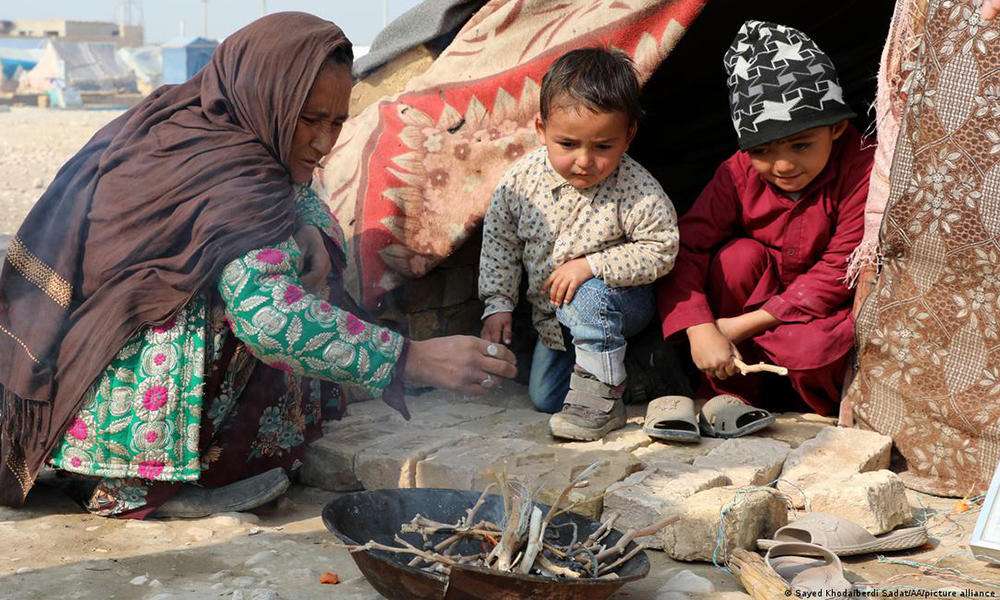
Last year, 2023, was a year of “tremendous challenges” for the people of Afghanistan, but it was also a year marked by resilience and determination, the Deputy Special Representative of the Secretary-General, Resident and Humanitarian Coordinator, Indrika Ratwatte, said in the UN’s annual report on Afghanistan that was published this week.
Ratwatte said: “In the face of adversity and multiple concurrent shocks, the people of Afghanistan have demonstrated remarkable courage and strength.”
Afghans now mention access to food as their most pressing need, he said adding that “unable to pay for or produce basic sustenance, millions face hunger and malnutrition.”
In 2024, an estimated 15.8 million people will experience crisis and emergency levels of food insecurity.
The majority of the population is unable to procure basic needs such as healthcare, food, livelihoods, and housing, the report stated.
The UN found that the country also remains vulnerable to climate change.
Following the worst drought in three decades, emerging El Niño conditions now threaten a new cycle of flooding and crop pests. In this context, lifesaving humanitarian aid has been crucial in preventing the collapse of the social fabric. It has also served to underpin the stability of the economy. Despite growing humanitarian needs, relevant funding cuts have forced humanitarian actors to prioritize the most vulnerable further, the report stated.
A Gallup poll found that 95 percent of the population consider themselves to be suffering. In addition to living in poverty, the average life expectancy in Afghanistan has been falling for the past five years.
The Herat earthquakes and unprecedented large-scale returns of refugees from neighbouring countries, including Pakistan and Iran, have shown the disruptive impact of recurrent shocks and underscored the need for sustained international engagement and support, the UN stated.
“As we embark on the next chapter, in 2024, it is imperative that we remain steadfast in our commitment to the principles of human rights, gender equality, and women’s Empowerment,” Ratwatte said.
“We will continue to include women as key partners in our work, to provide assistance ‘by women, for women’, and to tirelessly work for equal access to education in line with the demands we hear from Afghans in all areas of the country,” he said.
However, from an economic point of view, Afghanistan’s economy appears to be stabilizing at a low equilibrium level following a period of significant contraction since 2021.
The UN said in the report that growth barriers include severely restricted operations in the banking sector (including microfinance institutions), trade disruptions, and institutional issues hindering service delivery, including in the private sector.
“The sudden cessation of a significant amount of international aid and grants, which had accounted for 40 percent of the country’s Gross Domestic Product (GDP), along with a freeze on international reserves amounting to about US$9 billion and the imposition of international sanctions, caused a severe balance of payments, banking and payment systems crisis.
“Notably, financial restrictions have removed liquidity from the banking system,” the report stated.
Despite the crisis and a period of devaluation towards the end of the year, the AFN is 20 percent stronger than it was in 2021 due to currency export controls, UN cash shipments of US dollars into Afghanistan, and personalremittances.
Imports continued to surpass exports through 2023 and increased as the economy contracted.
“This appears to be a paradox: the currency appreciated while the trade deficit widened, suggesting that there might be other unidentified sources of financing besides US dollar cash shipments and remittances to support the account deficits,” the report read.
The UN also said that with its partners, it will work to initiate a dialogue with the Islamic Emirate on adjustments to regulatory frameworks and sustained public service delivery with the aim of creating a long-term and sustainable pathway to reduce aid dependency and put Afghanistan back on a path towards development
“In this regard, we reiterate our offer to the DFA for a dialogue and will work jointly with international partners, donors, and Afghans on how such engagement can be structured in a most productive way.”
Latest News
Beijing hosts Afghan delegation for talks on a wide range of issues

The third meeting of the China-Afghanistan working-level liaison mechanism on humanitarian assistance and economic reconstruction was held in Beijing this week where in-depth talks were held on numerous issues relating to Afghanistan.
Liu Jinson, Director of the Asian Department of China’s Ministry of Foreign Affairs, and Jalali, Director of the Third Political Department of the Ministry of Foreign Affairs of Afghanistan, co-chaired the Beijing meeting.
Also in attendance were representatives from various Chinese commissions, government departments, international aid organizations, as well as the Afghan Ministry of Commerce and Industry, the Ministry of Mines and Petroleum, the Ministry of Disaster Management, and the Ministry of Refugee Affairs.
Quoting an Afghan proverb, Liu said at the meeting that “friends come and go, but neighbors always remain.”
He pointed out that since 2021, China has implemented a diplomatic concept of amity, sincerity, mutual benefit and inclusiveness that was proposed by President Xi Jinping in terms of Beijing’s dealings with Afghanistan.
China has also adhered to a friendly policy towards all Afghan people, and adhered to the principle of respect for the country’s independence, sovereignty and territorial integrity.
He also said that during the different regimes in Afghanistan, China has always provided support and assistance for Afghanistan’s peaceful reconstruction and economic development.
The Afghan delegation meanwhile stated that the Islamic Emirate attaches great importance to developing relations with China, and thanked China for taking the lead in sending a new ambassador to Afghanistan and accepting the appointment of an ambassador to China.
The Islamic Emirate said Afghanistan is willing to deepen friendly relations with China, maintain traditional friendship, and will, as always, support China in safeguarding its core interests and achieving national reunification.
The two sides agreed in the meeting that Afghanistan is currently facing multiple challenges such as floods, droughts, and refugee resettlement, among other issues.
They also noted that the freezing of Afghanistan’s foreign assets by the United States has “aggravated the suffering of the Afghan people.”
The IEA stated however that it was “very grateful to China for its humanitarian assistance over the years and hopes to continue to receive help from China in refugee resettlement, disaster prevention and mitigation, improvement of medical and health conditions, and treatment of children with congenital heart disease.”
On the Belt and Road initiative, the IEA delegation said Afghanistan is deeply satisfied with the progress in practical cooperation between the two countries. They also said Afghanistan is willing to learn from China’s experience in modernization and development, and hopes that China will help Afghanistan cultivate more professional talents.
China meanwhile urged the international community to step up humanitarian assistance to Afghanistan, and said Beijing hopes the IEA will “actively respond to some of the international community’s reasonable concerns about Afghanistan’s inclusive governance.”
Liu in turn acknowledged the IEA’s efforts to promote economic reconstruction and said bilateral trade volume between China and Afghanistan reached US$1.33 billion last year, a record high and a year-on-year increase of 125.4%.
The Islamic Emirate meanwhile said in posts on X that the issue of investment opportunities in Afghanistan was widely discussed and both sides welcomed moves to pave the way for the export of pomegranates.
“Also, both sides talked about the latest developments in increasing the level of oil extraction in Afghanistan and starting the extraction of Logar’s Mes Aynak mine and it was emphasized that plans should be considered to speed things up,” the IEA stated.
“The Afghan side welcomed the capacity building training programs of civil servants in many ministries and agencies of the Afghan government with the support of China. In addition, the Chinese side promised to expand the range of scholarships to Afghan students according to the needs of Afghanistan,” the IEA stated.
Latest News
UN builds 470km of water canals in Afghanistan in past year
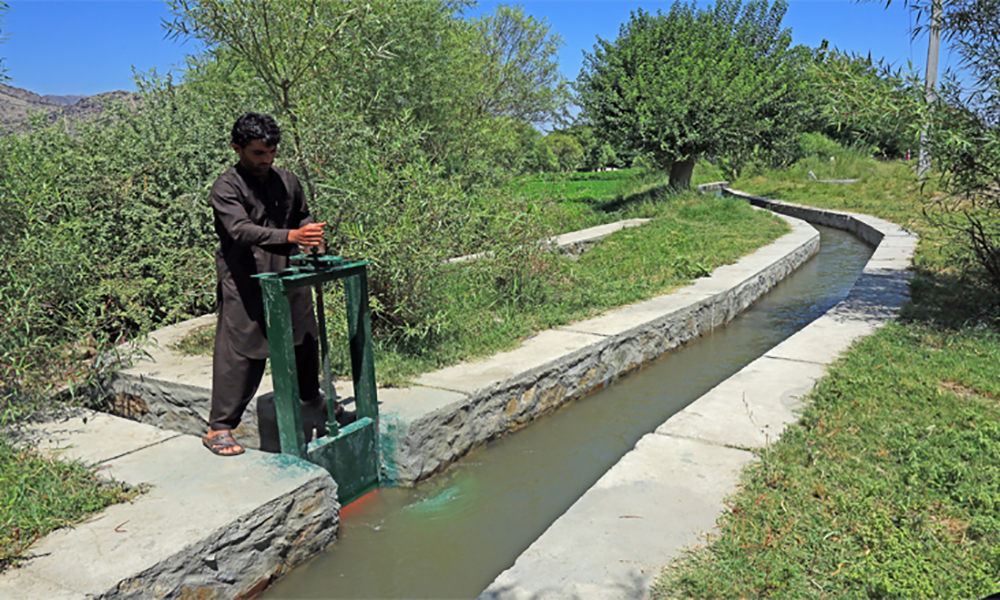
The United Nations has built 470 kilometers of much needed water canals in Afghanistan in the past year in cooperation with local communities, the World Food Program (WFP) confirmed.
WFP in Afghanistan said in a post on X, formerly Twitter, on Wednesday that the canals were built in order to provide access to water to more people across the country.
The agency said the people “in Afghanistan cannot continue their lives without access to water,” adding that the canals help farmers irrigate crops, which allows them to feed their families and sell surplus produce.
This comes after years of drought across the country. However, in the past few months, good rain has been recorded which will hopefully result in good harvests this year.
-

 Sport5 days ago
Sport5 days agoACL draw to be broadcast live on ATN channels
-
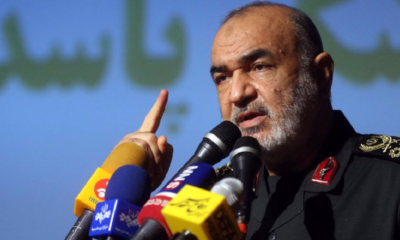
 Regional5 days ago
Regional5 days agoIRGC chief warns of harsher response if Israel attacks Iran
-

 Sport4 days ago
Sport4 days agoACL fever grows as fixtures finalized
-

 Latest News5 days ago
Latest News5 days agoContact group on Afghanistan hits roadblock over Pakistan’s gripe with India
-

 Sport5 days ago
Sport5 days agoHetmyer powers Rajasthan win in low-scoring IPL thriller
-
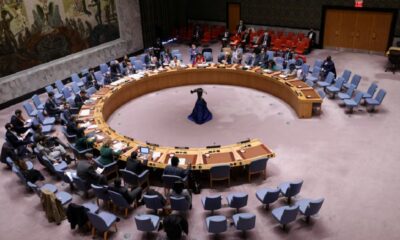
 World5 days ago
World5 days agoUN Security Council to meet Sunday on Iran attack
-

 World4 days ago
World4 days agoUS will not take part in any Israeli retaliatory action against Iran
-
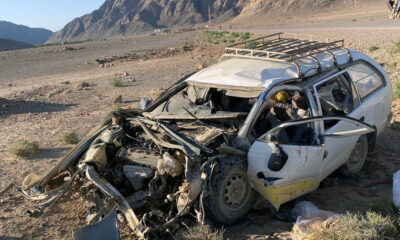
 Latest News4 days ago
Latest News4 days agoOver 50 people dead in traffic accidents over Eid


